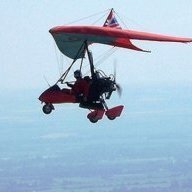If you are factory built (whatever the design standard) RAAus cannot override maintnenace set out by the manufacturer UNLESS they chose to under MARAP.
With the engine, prop and the instruments within a factory build the manufacturer generally simply calls out the maintenance as per the component manufacturers schedule.
If the aircraft manufacturer calls out or replicates the component manufacturers maintenance schedule then there is no wriggle room under RAAus if there is no allowance within those called out schedules.
I can only think of a couple of cases where an airframe manufacturer specifically excluded the engine manufacturers maintenance/overhaul schedule and replaced it with their own so basically you are left to the maintenance lists fo trhe airframe/engine manufacturer.
The only area where RAAus does/has effectively used MARAP to replace the requirements of a manufacturer is on-condition running of engines. This allowance is in effect a form of MARAP where RAAus takes on the airworthiness of a component in an airframe BUT that is limited in operations - use an airframe for training and reward through a school and it's by the book all the way, no on condition running.
Practically what you are up against when you have exceeded a maintenance period or overhaul life that applies to your airframe or a component within that airframe is:
1. you have a technical breach of the tech manual - that is an administrative action for RAAus to enforce under the RAAus structure and they have no history of enforcement
2. you have a technical breach of the tech manual - that is a breach of the CAO that the aircraft is registered and operates under (we are reuqired to maintain it in accordance with the Tech Manual) and that is an enforcement action by CASA and they have no hidtory of enforcement for minor/inadvertant contracventions
3. you have a technical breach of the tech manual - that is a risk for insurance coverage (either under RAAus group policy or any individual policy you may have) and I cannot comment on enforecement of insurance companies against owners/pilots ... but these are the ones that have the interest in not providing coverage or seeking recovery of cover from individuals and the resources and mind set to turn on you.
So your risk is breaching/non-complicance with the RAAus tech manual and that breach/non-compliance leaves you open to three general areas of action as outlines above.






